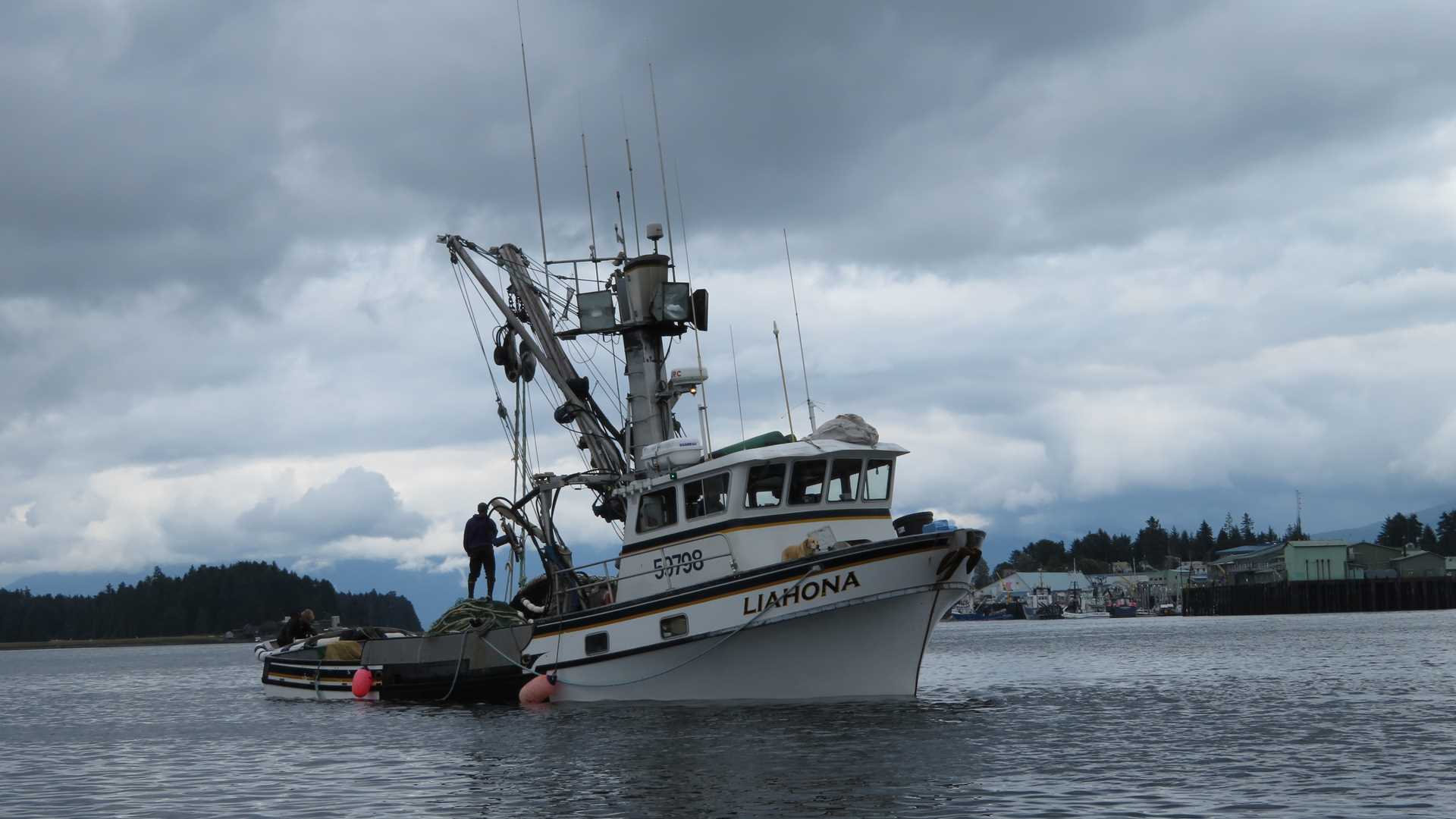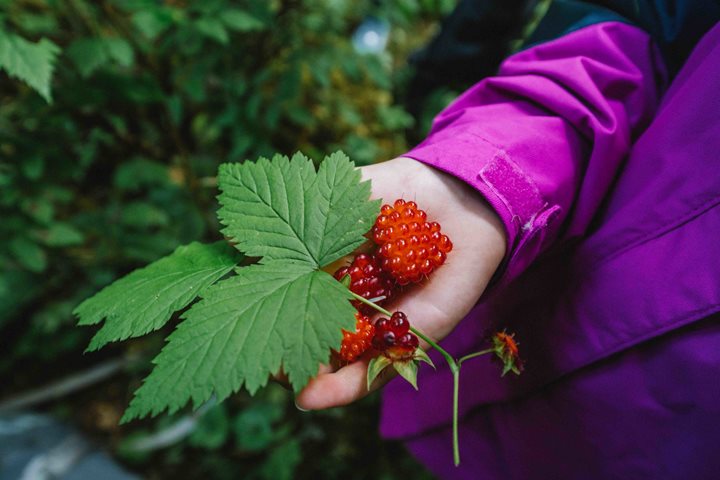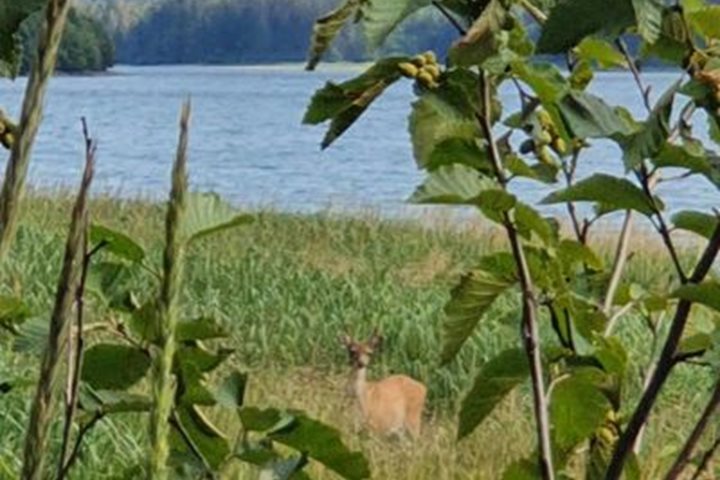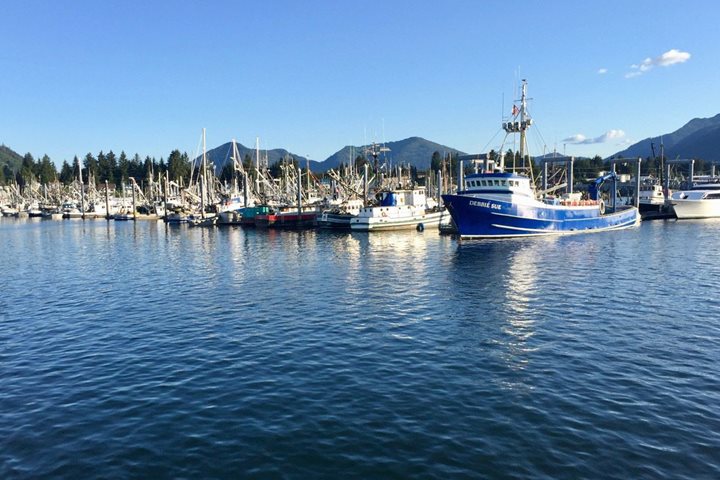In the early morning light we set off in our inflatable boats for cruising in Le Conte Bay among gorgeously blue icebergs. These beautiful bergs calved from the Le Conte Glacier, the farthest south tidewater glacier in North America. The wind was calm and the smooth, dark water reflected the intense blues of the ice. Many of the larger bergs were stranded on the terminal moraine of the Le Conte glacier, deposited when it attained its farthest reach. Here, as the tidal currents flowed around the ice, cold and food-rich water rose alongside the larger bergs. Bonaparte’s Gulls made the most of this opportunity and were actively catching small fish as they rose to the surface. Bald eagles soared overhead. Curious harbor seals surface all around and gazed at us with their large, dark eyes. As mist rose from the dark forest and clouds shrouded the mountaintops we took a few moments here, surrounded by great beauty, to feel the silence and experience the peace of quiet water and forest.
Afternoon found us docking at Petersburg, “the town that fish built”. The harbor here was busy with fishing boats setting out to sea and others returning with their holds full of valuable fish. Here were more eagles, gulls, and some black-and-white pigeon guillemots. Ravens and crows flew by and a few marbled murrelets, very small seabirds, dove for fish just outside the harbor.
At this charming town with a Norwegian flair we had a number choices for activities. Many opted for a hike in a unique and intriguing landscape—the muskeg, in addition to other activities. Muskeg is a type of bog where water stands nearly at ground level. Here, where water cannot drain away, sphagnum moss holds that water like a sponge and special plants grow in the nutrient-poor and acidic environment. Stunted trees (Pinus contortus) grow so slowly that even small trees may be 300-400 years old. Many smaller flowering plants and sedges grew there, but perhaps the most interesting was the Round-leafed sundew, an insectivorous plant; the soil is so nutrient-poor in the muskeg that these plants, to gain extra food, have evolved to digest insects that land on the temping and sticky “dew drops” that form on their leaves.
Floatplane trips to fly over the Le Conte Glacier were a popular option as was the “dock walk” with our photo instructor, Ian and diver, James. Another option was to stroll around this vibrant town that fish not only built, but also continue to support.







